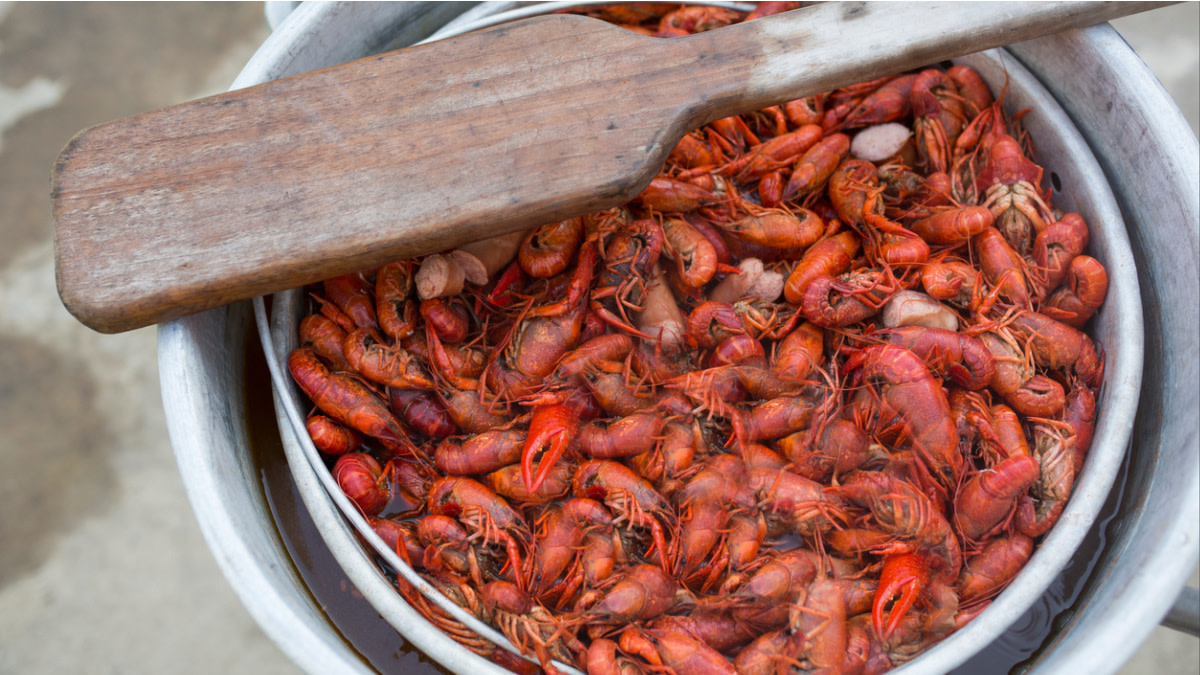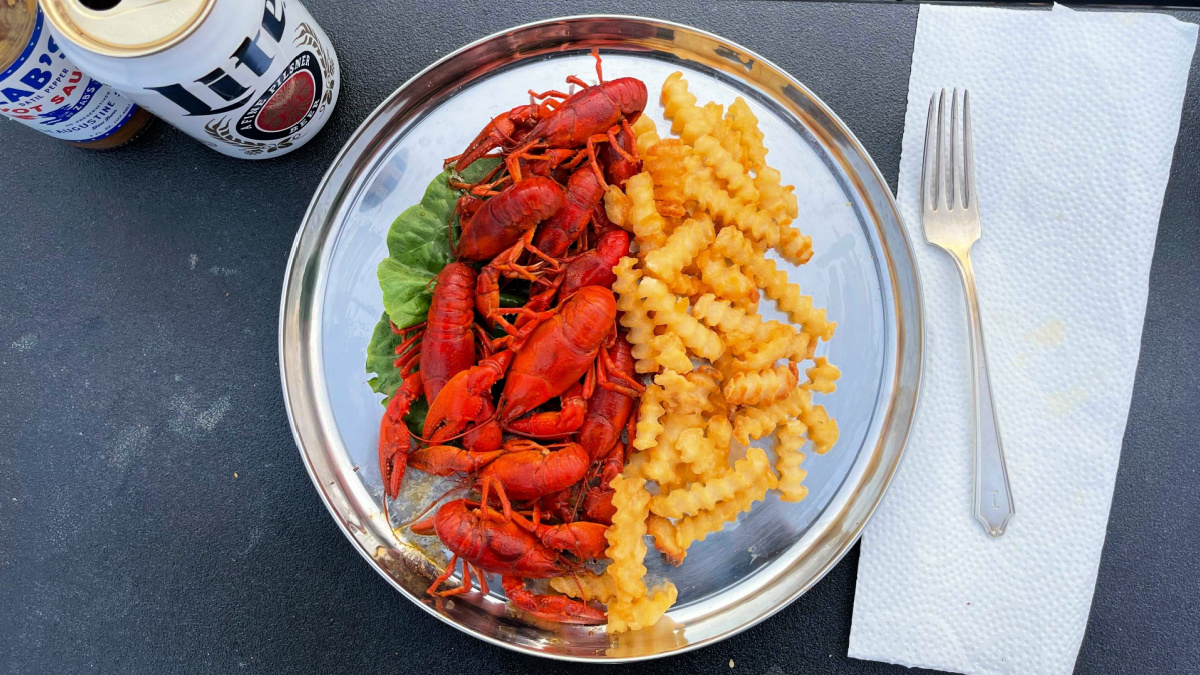
With water temperatures too hot to do much trout fishing in Southwest Montana, I found myself looking for ways to hit the river while leaving the fly rod at home. While I lamented the lack of after-work fishing to be had, my friend and Supervising Editor Sam Lungren suggested we go poke around the rocky shallows of the Lower Madison in search of mudbugs.
A few hours later we were loading a handful of pots in my pickup and heading out with a variety of baits, a loose strategy, and a mission—to have ourselves an old-fashioned Southern crawfish boil, despite being in a state bordering Canada.
Rules and Regulations Before heading out hunting, fishing, trapping, etc., you should always familiarize yourself with all the relevant rules and regulations. For us, the regulations were few. In addition to possessing a valid fishing license, we were limited to traps no larger than 2 feet by 1 foot by 1 foot. Since they were going to soak unattended, we were required to attach a tag with our name and phone number to each trap. Aside from a few select areas, these are the standard regulations for crayfish trapping in Montana. Many other states follow similar rules.
How to Choose a Crayfish Trap Crayfish traps are pretty straightforward; they’re basically minnow traps with a slightly larger opening. In fact, since the sport shop was out of crayfish-specific traps, we bought six classic, funnel-style minnow traps and simply cut the openings large enough for crayfish to enter.
There are other advantages to this style of trap. I like that they have two entrances, making it easier for the crayfish to find their way in. They’re also easy to transport and store—when the traps were broken down and nested together, we could easily fit six of them in a five-gallon bucket. They’re inexpensive too, coming in at around fifteen bucks apiece.
Of course, there are other styles of traps—box traps, umbrella nets, collapsible mesh basket traps—but for my money, this style makes for an accessible, affordable, and effective choice. While we modified a minnow trap, you can take it a step further (and save some money) by building your own crayfish traps.
Best Baits for Crayfish In our experience, the best bait is often some type of oily fish. If your state allows you to use sportfish as bait, use the carcass of last week’s catch for your traps. Trout, salmon, walleye, pike, sunfish, bass, catfish, almost anything you have laying around will work. Another great bait is a tilapia—you can pick up a bag of individually-packaged, frozen filets for easy transport.
While fish may be the gold standard, crawdads are generalist scavengers and are not choosy. Canned cat food with holes punched in the lid is a popular attractant, as are turkey or chicken legs. Really, any leftover or freezer-burnt meat can call them in.
You don’t need to fill the trap with bait. A piece about the size of your hand, like one whole sunny or one tilapia fillet, is all you need. The most important thing is that the crawfish are forced to enter the trap in order to access the bait. If they’re able to pick at it from outside the trap instead of going inside to get after it, you’ll never maximize your catch. Sporting goods stores sell wire mesh cages you suspend in the center of your trap with wire for this purpose. Simply put the bait in the cucagebe, use the wires to attach and suspend the bait inside the trap, and you’re good to go.
If you’re in a pinch, you can use cable or zip-ties to secure the bait to the bottom of the trap. As long as the trap stays put, the lake bed or creek bottom will block the crayfish’s access to the bait, forcing them to enter the trap to get to it.

Where to Set a Crayfish Trap Setting a crawdad trap is about the easiest part of this whole process. Find a rocky bottom in a slow-moving river or lake, then drop your trap in 2 to 20 feet of water. Some folks let the trap sit overnight, but if you’re in a good spot you can fill your trap in as little as an hour. I suggest dropping a string of pots and doing some regular fishing while they soak, checking back every couple hours. If you start in the morning on a productive lake, you should have plenty of mudbugs in time for an evening boil.
Crayfish can also be found in weed beds and around docks and other structure when rocks are absent. They’ll roam mud and sand flats but often do so at night when bass and other predatory fish aren’t after them.
How to Clean and Cook Crayfish When bringing your craws home from the lake to the table, the most important thing is to not let them die. An easy option is to put the crayfish on ice immediately. This will keep them alive for a day or two in between capture and boil.
You may also consider dropping a live bait aerator into a water-filled cooler. As long as you replace the water occasionally your crayfish should stay alive for a good long while. Some folks like to “purge” crayfish in clean water for a full 24 hours—allowing them to expel any bad flavors or contaminants—which does help improve flavor. Changing the water regularly helps with that.
Touching back on regulations, it’s important to be aware that some states consider varieties of crayfish to be invasive. Read your local regulations to be sure you’re not inadvertently breaking any laws by transporting them between the lake and your kitchen using either of these methods. Regardless of what you choose to do, the most important thing is that you have a plan.
Cook crayfish the same way you’d cook any other crustacean or shellfish. For most of us, that means a classic boil in heavily seasoned water with corn, potatoes, and sausages. If you’re feeling more creative than the standard boil (although that remains my preferred way to eat crawdads), here are 40 recipes straight from the bayou to get you started.
To eat, separate the head from the tail of your cooked crawdad. Slurp the juices out of the skull if you’re a real outdoors person, then peel the exoskeleton off the tail and eat that delicious meat.
Go Get ‘Em Catching crayfish is a great way to spend a day, and a classic crayfish boil is an even better way to spend an evening. If you’ve been hankering for a seafood fix in your landlocked state, drop a pot and get to catching. Fresh shellfish is likely a lot closer than you think.





